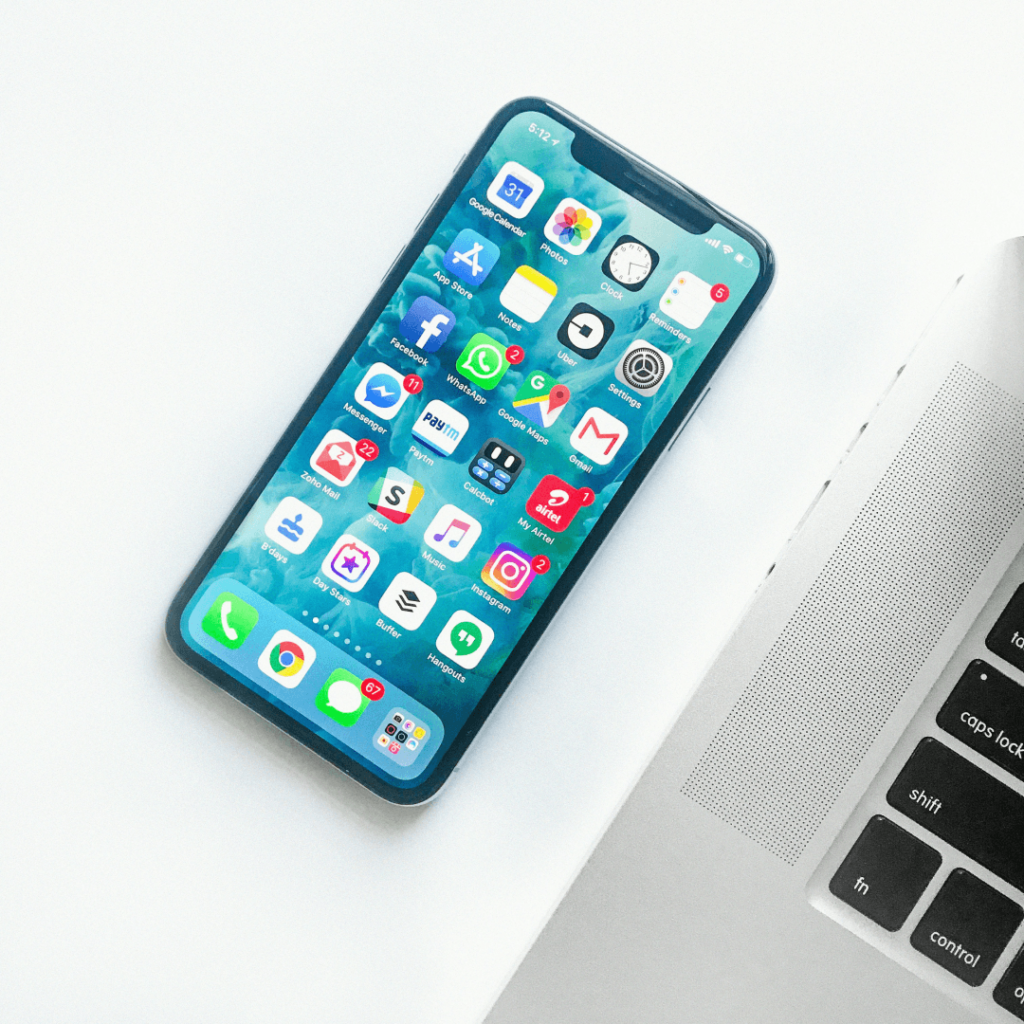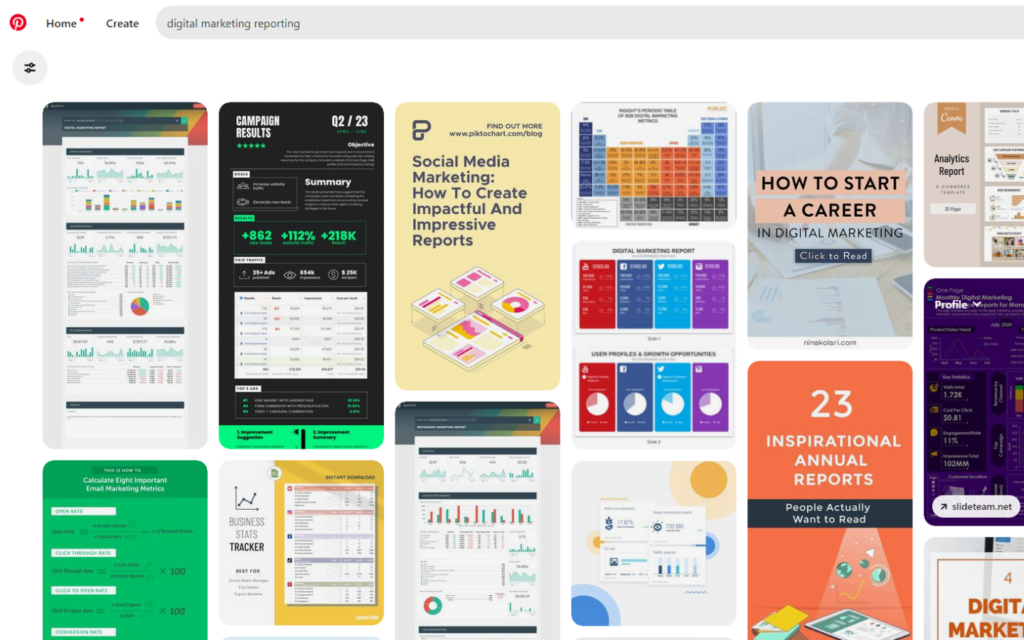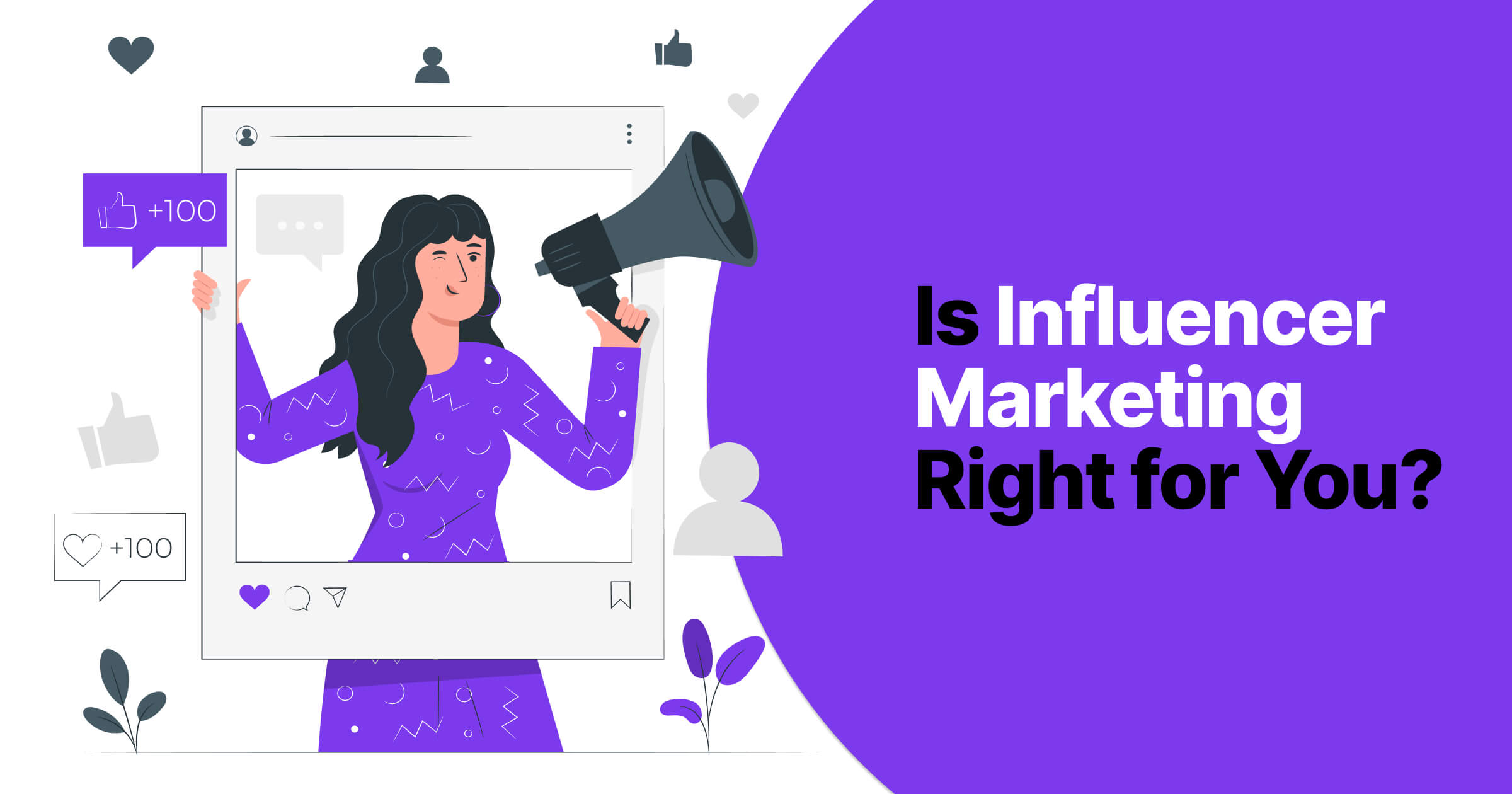Table of Contents
The rise of social media came with a rise of new opportunities for marketers to engage with their customers. Analytics and Big Data have allowed marketers to use predictive analytics to understand their target audience better. Knowing which platforms they spend most of their time on and what content they engage with can help marketers build a killer social media strategy.
Nowadays, many companies are choosing to use social media influencers in their strategies as it is a great way to generate quality leads and new traffic to their websites. This technique is known as influencer marketing. But what exactly is influencer marketing? And how can companies benefit from this?

What is influencer marketing?
Influencer marketing is a strategic approach that entails partnering with influential personalities on social media to enhance product or service visibility among a highly engaged audience. Distinct from the traditional celebrity endorsement model, influencers are characterized not by their fame, but by two pivotal attributes:
Niche-specific Following
True influencers cultivate a substantial audience within a particular niche or industry, engaging them through content that resonates with their interests and preferences. This content, which ranges from videos and images to podcasts and live streams, is not only appealing but also establishes the influencer as a go-to source within their field.
Influential Impact
The core of an influencer’s appeal lies in their ability to sway their followers’ purchasing decisions. This influence is built on a foundation of trust and expertise in their niche, fostered over time through consistent and authentic engagement.
An illustrative example of this dynamic is a micro-influencer in the home decor sector who, over four years, amasses 50,000 Instagram followers by sharing engaging content focused on interior design. Such an influencer could significantly drive sales for a partnering furniture brand with just a single branded post. Despite not being a celebrity, her niche authority and deep connection with her audience render her endorsement highly impactful.
In essence, influencer marketing leverages the targeted reach and specialized influence of key individuals to deliver a brand’s message to a receptive and engaged audience, making it an indispensable tactic in modern marketing arsenals.

How to Build an Influencer Strategy
There is no right way to build an influencer strategy as there are various platforms a company can pick from. The strategy would vary depending on the platform used, the marketing objectives, and the dedicated budget.
1. Choose your platforms
The world of digital marketing is ever-evolving, with new platforms and content types emerging regularly. While certain platforms are traditionally associated with specific content types and industries, innovative approaches can uncover new opportunities in less expected places. For instance, Pinterest, known for its visual content and strong in sectors like DIY, fashion, and home decor, also serves as an excellent example for hosting digital marketing reports. Here’s a brief exploration into popular social media platforms and their typical use cases, highlighting the flexibility in their application:
| Platform | Content Type | Traditional Use Cases | Innovative Use Case |
|---|---|---|---|
| Professional articles, job postings | B2B networking, industry insights | Showcasing company culture and CSR initiatives | |
| Text, images, videos | Social networking, brand pages | Virtual events and live product demos | |
| Images, Stories, Reels | Lifestyle, fashion, travel | Behind-the-scenes content, product development stories | |
| YouTube | Videos, Tutorials | Entertainment, education | Thought leadership interviews, product walkthroughs |
| Images, Infographics | DIY projects, fashion, recipes | Digital marketing reports, data visualization |

Pinterest as a Case Study for Digital Marketing Reports
Pinterest, with its visually oriented platform, might not be the first choice for marketers looking to share digital marketing reports. However, its strength in visual storytelling makes it a unique space to present data visually. Infographics, data visualizations, and concise report summaries can perform exceptionally well here, attracting a different audience segment that values quick, digestible insights.
By leveraging Pinterest’s pinboard layout, marketers can curate collections of reports and infographics that not only inform but also engage viewers aesthetically. This approach can drive traffic to more detailed reports hosted elsewhere or serve as standalone snapshots of marketing performance, consumer trends, or industry insights.
The digital marketing world is not bound by rigid rules regarding platform use and content types. By thinking creatively and adapting strategies to each platform’s unique features, marketers can uncover new ways to reach and engage their target audiences. Pinterest’s example underscores the importance of remaining open to exploring and experimenting with how and where digital marketing reports can be shared, reminding us that innovation often happens at the intersection of unconventional ideas and strategic execution.
For more information on using Pinterest:
- How to Grow Your Audience & Make Money on Pinterest | Pinterest Creators
- The Complete Pinterest Marketing Guide (shopify.com)
- The Ultimate Guide to Pinterest Marketing (hubspot.com)

2. Decide your budget
Navigating the influencer landscape can seem like charting a course through uncharted waters, with rates as varied as the influencers themselves. Understanding the spectrum of influencer fees is crucial for aligning with your campaign budget and objectives. Here’s a breakdown of what you might expect to invest:
| Influencer Type | Followers | Audience Engagement | Typical Content | Utility for Brands |
|---|---|---|---|---|
| Nano-influencers | <10,000 | Highly engaged, niche | Authentic, personal | Ideal for hyper-targeted, community-focused campaigns; cost-effective |
| Micro-influencers | 10,000 – 100,000 | Very engaged, niche | Niche, creative | Great for driving conversions with high engagement rates |
| Macro-influencers | 100,000 – 1 million | Broad, somewhat engaged | Professional, polished | Suitable for increasing reach and credibility in specific sectors |
| Mega or celebrity | >1 million | Broadest, varied | Broad appeal | Best for large-scale brand awareness campaigns with wide exposure |
Tailoring Your Budget to Influencer Tiers
Your budget will be the guiding star in selecting the right type of influencer. While micro-influencers and nano-influencers offer cost-effective solutions for brands aiming to target specific niches or test the influencer marketing waters, mid-tier and mega influencers bring expansive reach and the prestige of well-known personalities. It’s not just about the follower count but the alignment between the influencer’s audience and your target demographic, as well as the authenticity and engagement that the influencer can bring to your campaign.
For instance, a beauty brand launching a new skincare line might partner with micro-influencers known for their skincare routines, tapping into their credibility and engaged audience for a targeted campaign. Conversely, a global apparel brand seeking broad visibility for a seasonal launch might engage a mega influencer for their extensive reach and influence.
Negotiating Beyond the Base Rate
Remember, the base rate is just the starting point. Factors such as campaign length, content complexity, and usage rights can all influence the final cost. For example, if you plan to repurpose an influencer’s content across your channels, this typically requires negotiation beyond the initial rate, as influencers may charge more for multi-platform use or extended rights.
Setting a clear budget and understanding the different tiers of influencers are crucial first steps in building an effective influencer strategy. By carefully matching your brand’s needs with the right influencer tier, you can maximize your campaign’s impact without stretching your budget.

3. Identify your brand’s needs
To effectively identify your brand’s needs and ensure your influencer marketing strategy aligns with your goals, it’s crucial to take a structured approach. Before diving into partnerships with influencers, here are key steps to consider:
| Step | Description | Explanation |
|---|---|---|
| Define Your Campaign Goals | Set clear objectives for your influencer marketing efforts, such as increasing brand awareness or driving sales. | Clear goals guide your strategy and help measure success, ensuring your efforts align with your overall objectives. |
| Understand Your Audience | Analyze your target audience’s demographics, interests, and behaviors. | Ensures influencers’ followers align with your target audience, making campaigns more effective. |
| Content Relevance and Authenticity | Ensure influencer content matches your brand’s messaging and values. | Influencers sharing similar interests with your brand create authentic, engaging content for their audience. |
| Engagement Over Reach | Prioritize engagement rates over follower count. | High engagement rates indicate a loyal audience more likely to be influenced by purchasing decisions. |
| Finding the Right Influencers | Monitor discussions about your brand or industry and examine competitors’ influencer collaborations. | Identifies potential influencer partnerships aligned with your brand without relying on specific tools. |
| Reaching Out to Influencers | Engage with potential influencers to build a relationship before proposing a collaboration. | Personalized, strategic proposals increase the likelihood of collaboration, showing genuine interest and fit. |
Remember, influencer marketing success relies on a strategic fit between the influencer, their audience, and your brand’s goals. Taking the time to research and plan will ensure your influencer partnerships are effective and contribute to your overall marketing objectives.

4. Find your influencer
With a clear platform choice, budget, and message, the final piece of the puzzle is finding the influencer who can become an authentic ambassador for your brand. There are plenty of tools out there to help you filter potential candidates by demographics, engagement rates, and more.
Utilizing Influencer Discovery Tools
Tools like BuzzSumo allow you to search for influencers by keywords related to your brand or campaign. These platforms provide insights into content popularity and influencer engagement, helping you find individuals whose audience aligns with your target market. Similarly, platforms like Hootsuite, Mention, and Followerwonk offer various features for influencer discovery, allowing you to compare and decide which tool best suits your needs.
Evaluating Influencer Metrics
Regardless of the tool used, key influencer metrics such as follower count, engagement rate, and content relevance should guide your selection process. Look for influencers who not only have a significant following but also boast high engagement rates, indicating a strong connection with their audience. This ensures that your message reaches an active and interested audience.
Analyzing Content Relevance
The most effective influencers are those who produce content closely aligned with your brand’s values and campaign goals. Social media management tools can help you identify influencers who frequently share content related to specific topics, thereby ensuring a natural fit for your brand.
Engaging With Potential Influencers
Once you’ve identified potential influencers, the next step is to engage with them to gauge their interest in a partnership. Direct outreach, whether through social media messages or email, can help establish a connection and open discussions about possible collaborations.
Leveraging Multi-Platform Searches
Diversifying your search across multiple platforms can provide a broader view of potential influencer partnerships. Instagram, Twitter, and YouTube each have their own set of tools and features for influencer discovery, such as Instagram’s “Suggested for You” feature or YouTube’s channel search filters.
By following these steps with intention and insight, you’ll be well on your way to forging an influencer strategy that not only reaches but genuinely engages your target audience, driving meaningful results for your brand. But if you’re not ready to invest in a tool just yet, peeking at what competitors are doing could also offer some golden insights.

Not ready to commit to a social media tool?
Finding influencers without relying on tools like BuzzSumo requires a bit more creativity and manual effort, but it’s entirely possible and can be quite effective. Here are a few tips to get you started:
🔎 Explore Social Media Hashtags: Delve into hashtags related to your industry on platforms like Instagram, Twitter, and TikTok. Influencers often use popular, relevant hashtags to reach a wider audience. By following these hashtags, you can discover influencers who are actively engaging with topics pertinent to your brand.
🕵️♂️ Monitor Competitor Collaborations: Keep an eye on your competitors’ social media channels to see which influencers they’re working with. This can give you insights into influencers who are already open to partnerships and have experience promoting products or services in your niche.
🔍 Leverage Google Searches: Utilize Google to search for blogs and articles listing top influencers in your industry. Searches like “top [industry] influencers 2024” can yield curated lists from various publications, saving you time in your initial search.
🗣 Attend Industry Events: Whether online or in-person, industry events, webinars, and conferences are great places to find influencers. Speakers, panelists, and active participants often hold significant influence within their niches.
💡 Utilize Social Media Recommendations: Platforms like Instagram and YouTube offer recommended accounts to follow based on your activity and whom you already follow. These recommendations can often lead you to influencers who align with your brand’s values and target audience.
🙋 Engage in Online Communities: Participate in online forums and communities related to your industry, such as Reddit or specific Facebook groups. Influencers often contribute to these communities to establish their authority on subjects, making it easier for you to identify potential partners.
🤝 Network Through Existing Connections: Tap into your existing professional network for recommendations. Other businesses, partners, or even customers might have suggestions for influencers who could be a good fit for your brand.
🔍 Directly Search on Social Platforms: Most social media platforms have a search function that allows you to look up keywords, phrases, or hashtags related to your industry. You can use these features to find posts and accounts that match your criteria for potential influencer partnerships.

Benefits Of Influencer Marketing
🟢Relevant Audience
To ensure your influencer marketing efforts resonate effectively, it’s essential to collaborate with influencers who already engage with brands similar to yours. This strategy guarantees that you’re reaching an audience aligned with your niche, increasing the likelihood of attracting new potential customers who trust the influencer’s endorsements. Influencers have cultivated a deep trust with their followers by providing value and relevance through their content, making their recommendations highly impactful.
🟢Builds Credibility and Trust
Influencers are seen as trusted authorities in their niches, and their endorsement serves as powerful social proof, significantly enhancing your brand’s credibility. This trust has been built over time through authentic interactions and valuable content, positioning influencers as reliable sources of recommendations for their followers. Engaging with the right influencer can instantly elevate your brand’s trustworthiness and appeal to potential customers.
🟢Increased Reach
Leveraging influencers with substantial followings can dramatically expand your brand’s reach beyond your current audience, connecting you with millions of potential customers efficiently. The authentic relationship between influencers and their followers, characterized by a “friend-like” dynamic, makes it easier for them to influence purchasing decisions, effectively driving new customer acquisition for your company.
🟢Less Expensive
Micro-influencers represent a cost-effective avenue for brands exploring influencer marketing. Many are open to collaborating in exchange for products or services, offering an affordable way to promote new products and increase brand visibility within specific niches. This approach allows for targeted marketing efforts without the need for a large financial outlay.
🟢Saves Time
Partnering with influencers saves brands the time and effort required to create engaging content. Influencers excel at producing content that resonates with their audience, facilitating a deeper connection and attracting new followers. Their ability to craft authentic and appealing messages streamlines the marketing process, enabling brands to focus on other strategic areas.
Influencer marketing, with its ability to directly engage relevant audiences and build credibility, offers a dynamic and impactful strategy for brands looking to enhance their digital marketing efforts. By carefully selecting influencers whose audience, content, and values align with your brand, you can leverage their influence to achieve significant marketing objectives, from increasing brand awareness to driving sales. The key to success lies in strategic planning, authentic partnerships, and ongoing evaluation to ensure your influencer marketing campaigns deliver the desired outcomes.

Disadvantages Of Influencer Marketing
🔴Brand Reputation
Working with influencers carries inherent risks to a brand’s reputation. The alignment between a brand’s values and an influencer’s public image is crucial. Negative publicity or controversies surrounding an influencer can directly impact the brand they represent, highlighting the importance of careful selection to maintain brand integrity and trust with consumers.
🔴High Risk
Influencer marketing involves significant variability in outcomes, making it a high-risk strategy. The effectiveness of an influencer campaign isn’t solely dependent on the influencer’s follower count but on the quality of engagement and content creation. Selecting influencers whose audience profile aligns with the brand’s target market is essential to mitigate risks and ensure targeted reach.
🔴Difficult to Measure Results
One of the major challenges in influencer marketing is measuring its effectiveness. While follower count and engagement rates offer some insights, they do not guarantee success. Utilizing analytical tools and securing detailed data on the influencer’s audience can help in making informed decisions. However, measuring the direct impact of influencer marketing campaigns on sales and brand awareness remains complex, necessitating a set of diverse metrics for a comprehensive evaluation.
🔴Cost Variability
The cost associated with influencer marketing can significantly vary based on the influencer’s reach, engagement, and niche, making budget planning and ROI estimation challenging. While micro-influencers may offer cost-effective solutions, established influencers and celebrities command higher fees, requiring brands to carefully consider their investment relative to the expected return.
🔴Saturation and Authenticity Concerns
The growing popularity of influencer marketing has led to market saturation, where consumers are constantly exposed to sponsored content, potentially diminishing the perceived authenticity of influencer endorsements. This saturation challenges brands to stand out and maintain consumer interest amidst the noise.
In essence, while influencer marketing presents an attractive avenue for brand promotion and audience engagement, it requires meticulous planning, influencer vetting, and a balanced approach to content authenticity and marketing goals alignment. Considering these challenges and strategically addressing them can help brands leverage influencer marketing more effectively.
In Conclusion
Influencer marketing has emerged as a compelling digital marketing strategy, offering brands the ability to tap into niche yet highly engaged audiences and build credibility through endorsements from trusted personalities. Strategic partnerships with influencers whose following and content organically align with a brand’s values and goals can significantly expand reach and ultimately drive business growth.
However, this approach comes with inherent challenges, including potential reputation risks, variability in campaign effectiveness, and difficulty measuring concrete ROI. Success requires thoughtful vetting and selection of influencers, clear campaign goal-setting, and ongoing performance evaluation.
When executed strategically through the right influencer partnerships, influencer marketing can become a powerful component of a multifaceted digital marketing strategy. It enables brands to break through the noise and foster meaningful engagement with relevant target demographics. Yet brands must also remain cognizant of both the significant opportunities and potential pitfalls that influencer marketing presents.
Those seeking excellence in their marketing efforts must approach influencer marketing with care and strategy. While time-intensive, its ability to tap into niche communities primed for engagement makes influencer marketing an indispensable modern technique for digital marketers.
Q&A on Influencer Marketing
What new roles are AI influencers expected to play in influencer marketing?
AI influencers are emerging as a novel phenomenon, with potential to engage users in unique interactions on platforms like WhatsApp, Messenger, and Instagram, making AI more familiar and influencing daily decisions.
How is live shopping shaping influencer campaigns?
Live shopping experiences are gaining traction, with platforms like Amazon, Facebook, TikTok, and Instagram developing tools for influencers to promote products directly through live streams.
What emphasis is being placed on diversity and representation in influencer marketing?
There’s a growing focus on ensuring diversity and representation, with agencies like REFLECT and Black Girl Digital leading efforts to include underrepresented groups in media campaigns.
Why are brands seeking ongoing partnerships with influencers rather than one-off projects?
Long-term collaborations are becoming more common as they allow for more effective sales conversion and the opportunity to build stronger relationships, compared to short-term, one-off sponsored posts.
How is TikTok’s role in influencer marketing evolving?
TikTok’s user engagement is surging, making it a key platform for influencer marketing with expected spending to exceed $1.3 billion by 2024.
What’s the significance of AI-generated influencer personas?
AI-generated personas are being used to create more personalized and engaging experiences on social media, potentially opening new avenues for marketing campaigns.
How are brands leveraging their employees as influencers?
More companies are encouraging their employees to act as brand ambassadors, showcasing products and sharing information through personal social media accounts.
What trend is emerging with exclusive influencer content?
Exclusive content behind paywalls, like “close friends” features and ticketed meet-ups, is becoming popular, offering unique partnership opportunities for brands.
How is affiliate marketing integrating with influencer marketing?
The affiliate marketing industry is growing, with influencers playing a key role in driving brand awareness and sales through personalized recommendations and content.
Why are influencers turning their content into paid ads?
Brands are focusing on repurposing influencer content for web pages and paid ads to target niche audiences more effectively and increase conversions.
What are the conversations around pay transparency in influencer marketing?
The lack of clear standards for influencer compensation is prompting discussions on pay transparency, with platforms emerging to help creators and brands navigate this issue.
How are influencers evolving into business owners?
Many influencers are leveraging their platforms to launch their own businesses, creating new partnership opportunities for brands with both the influencer and their business accounts.
What role does “stock content” play in influencer marketing?
Influencers are using stock or B-roll footage to create content more efficiently, allowing them to maintain engagement with their audience while managing workload and mental health.
How is the trend of less filtered and curated content affecting influencer marketing?
The shift towards more authentic, in-the-moment content is influencing how influencers present themselves and their partnerships with brands, fostering deeper connections with their audience.
What impact is the shift from paid advertising to influencer marketing having on brands?
As brands allocate more budget to influencer marketing due to its higher ROI and lower customer acquisition costs, the industry is seeing a significant move away from traditional paid advertising.
Master Marketing
Add to your knowledge and master your marketing by learning all you need to know on affiliate, reciprocal and viral marketing.
Not what you were looking for? No problem! Check out our blog to learn all about digital marketing reports, SEO, and industry-related trends.
